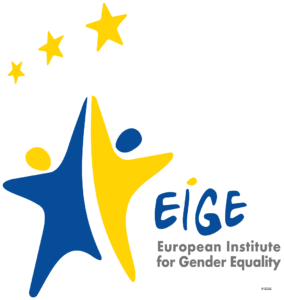
If the state does not provide any services by itself or if it procures products and goods, it usually concludes contracts with third parties. According to EIGE public procurement has a great potential to promote gender equality, both on the inside and on the outside. Whenever public procurement takes account of gender (equality) or gender mainstreaming principles, this is called Gender Procurement. As in Gender Procurement money moves from one party (the state) to another one, it is deemed to be part of Gender Budgeting.
According to EIGE the use of secondary or gender criteria is not only in line with public procurement laws (i.e. the EU Procurement Directives), but also
“it is important to incorporate gender equality in the subject of the contract itself [whenever possible]. This will allow the incorporation of gender equality clauses requiring gender technical competence to the awarding entities, as well as the inclusion of gender criteria for the evaluation of the submitted proposals and for further implementation.
However, this is not always easy or possible. Therefore, it is important that gender equality clauses are incorporated into the conditions for implementation of the contract. This would affect any contract and would ensure that public procurement becomes an instrument for gender equality.
Examples of factors that may be considered when evaluating a proposal:
- Is the proposal briefed on relevant gender issues and provided with background documentation, including literature and documentation relevant to gender equality issues and national and EU policy documents on gender equality (for example, relevant material from EIGE)?
- Is the project team gender-balanced? Do the team members have an adequate level of gender expertise?
- Does the proposal include sex-disaggregated data and gender indicators?
- How do the team members propose to measure the different impacts of activities and interventions on women and men?
- Will the views of female beneficiaries and other stakeholders, such as gender experts or women’s organisations be sought?
Examples of requirements that may be included within the implementation conditions:
- Gender-balanced composition of the project team and beneficiaries;
- Balanced presence of women and men in decision-making positions;
- Specific analysis about gender-related concerns in the project and in the reports:
- mapping of the situation of women and men in the concerned area;
- elaboration of gender-specific objectives in line with the latest findings and with the objectives of the call;
- explanation on how these objectives have been achieved;
- Use of sex-disaggregated data and gender indicators;
- The application of user-centred and/or participatory methodologies which take into account a gender dimension by directly involving a fair share of women in the process and by looking at how gender inequalities/differences are structuring the domains and the contexts of a particular policy area;
- Preference given to women when hiring staff in male-dominated sectors.
The contract negotiations with applicants whose proposals were selected for funding are a very important phase, in which significant improvements to project plans can be realised. Thoroughly address the gender equality concerns in contract negotiations with applicants. If needed, demand corrective measures before signing a grant agreement.” (EIGE website)
Please note that secondary criteria have provoked controversy in the past. If you want to use them in your call for tender, please make sure that they are in line with European and national law. The fundamental principles under primary law and the basic public procurement principles must be respected in any case.
Leave a reply by using the form below. If you cannot access the comment section, please send us your statement by mail to: imag-gmb@bka.gv.at!